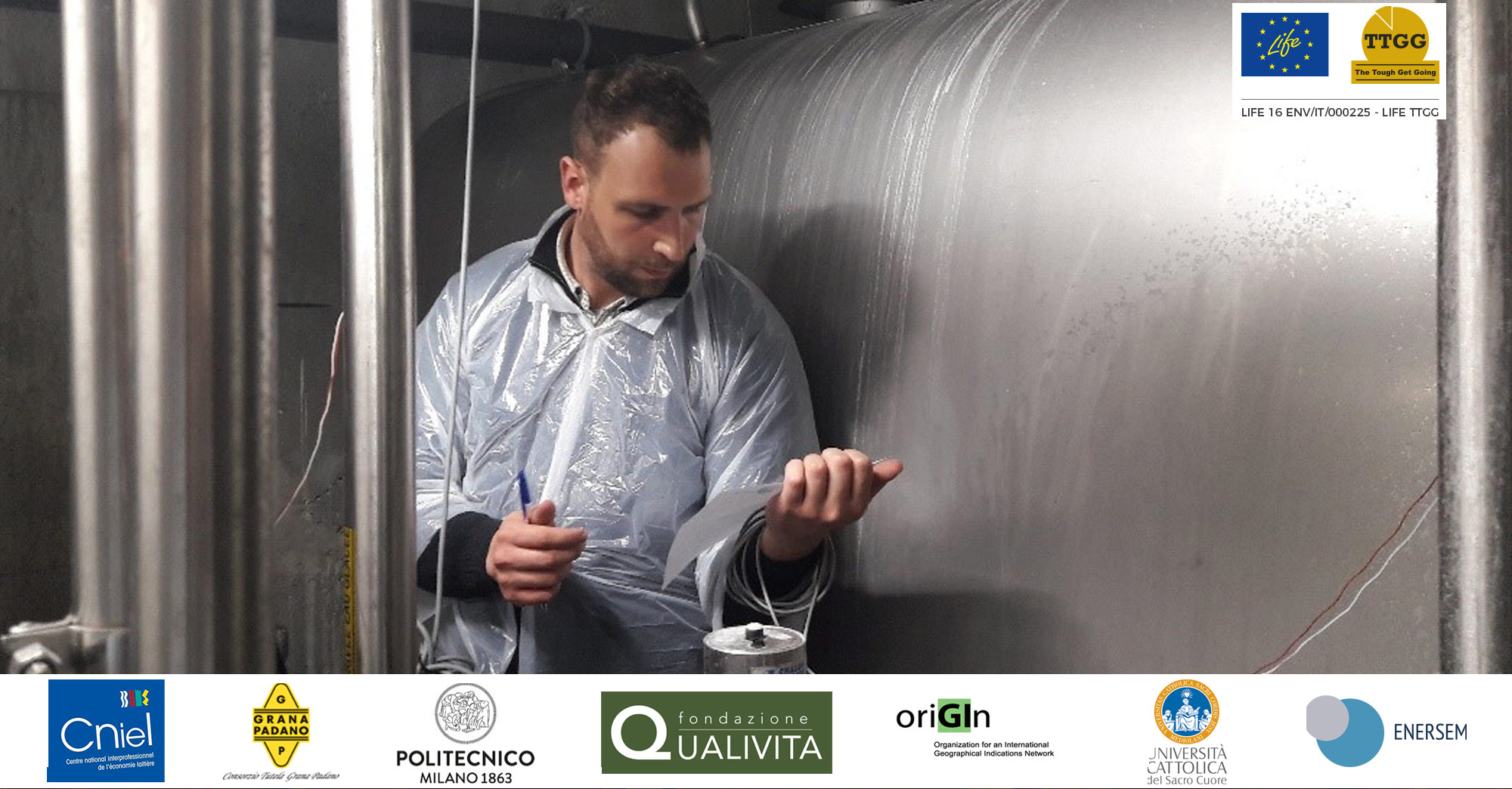Strategies for energy efficiency in dairies
The project involves 7 highly qualified partners: Consorzio tutela Grana Padano, Politecnico di Milano, Università Cattolica del Sacro Cuore di Piacenza, Fondazione Qualivita, oriGIn, Enersem and CNIEL
Here is the portrait of energy efficiency in dairies! To be precise, this is the picture of thermal and electrical consumption normalized to the quantity of milk treated.
During the LIFE TTGG project, Enersem has pointed out that there are great differences in the sample of dairies examined by its experts: some peculiarities of cheese production process imply a physiological increase in consumption, for example the whey concentration system. The dairies that use this system have a higher consumption compared to the ones that only cool down the whey. This does not mean, though, that the first dairy is less efficient than the second. On balance, it turns out that the dairies that implemented heat recovery strategies are more efficient.
Here are two examples of these strategies:
- Recovery of heat from the whey. In most dairies, the whey discharged from the kettles is cooled down and stored in tanks, awaiting further processing or to be delivered outside. This heat – at about 50°C – can be recovered to supply some users in the dairy, otherwise supplied by steam or hot water, usually produced by gas boilers. In a possible configuration of the recovery system, a part of the whey cooling heat-exchanger is replaced by a section that feeds the recovery circuit: the whey is cooled down to a temperature that strictly depends on the thermal level of the users selected for the waste heat; the lower is this thermal level, the lower is the leaving temperature of the whey.
- Recovery of condensation heat from chillers. Chillers in Grana Padano maturing warehouses are often condensed with cooling tower water. In this case, it is possible to recover part of the condensation heat that otherwise would be dissipated to feed the heating coils of the air handling units in maturing warehouses. This requires a rather “generous” sizing of said coils, so that they can be fed by water at about 24-26°C. In fact, the conditions to be maintained inside the warehouse are not prohibitive, as the setpoint temperature is between 15°C and 22°C. This efficiency measure is particularly interesting if a centralized chiller is installed.
| The Consorzio di tutela and the companies with PDO and PGI production can ask more information by writing to the person in charge of the Politecnico di Milano: pieter.ravaglia@polimi.it. |
Source: Enersem


